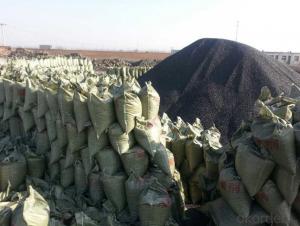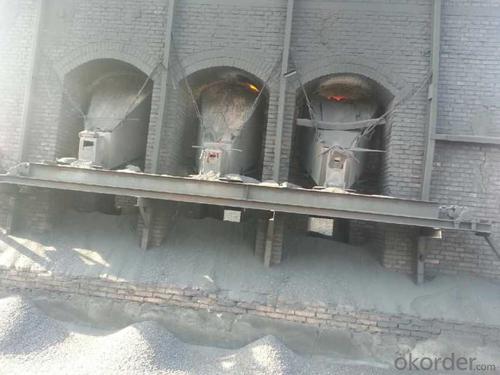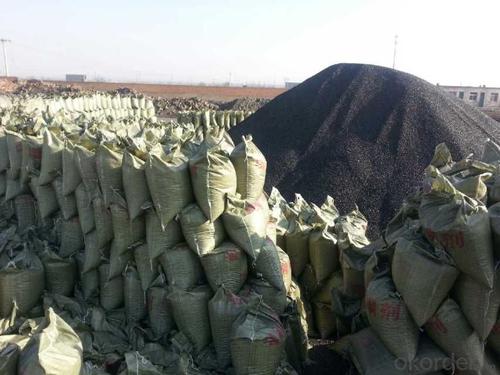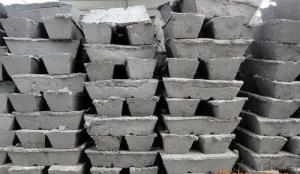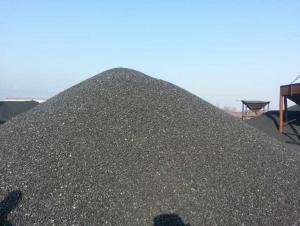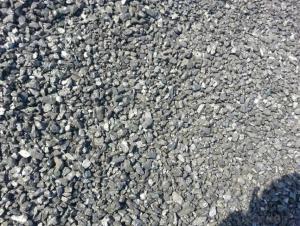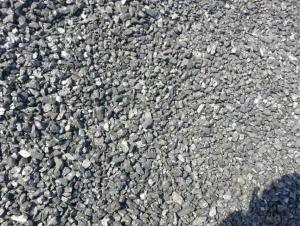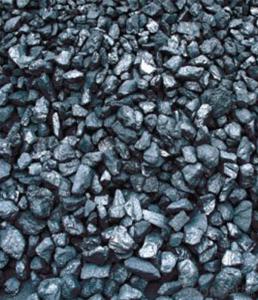Injection carbon FC80-90 with stable quality
- Loading Port:
- Tianjin
- Payment Terms:
- TT OR LC
- Min Order Qty:
- 20 m.t.
- Supply Capability:
- 3000 m.t./month
OKorder Service Pledge
OKorder Financial Service
You Might Also Like
Packaging & Delivery
25kgs/50kgs/1ton per bag or as buyer's request
Specifications
Calcined Anthracite
Fixed carbon: 90%-95%
S: 0.5% max
Size: 0-3. 3-5.3-15 or as request
It used the high quality anthracite as raw materials through high temperature calcined at over 2000 by the DC electric calciner with results in eliminating the moisture and volatile matter from anthracite efficiently, improving the density and the electric conductivity and strengthening the mechanical strength and anti-oxidation. It has good characteristics with low ash, low resistvity, low sulphur, high carbon and high density. It is the best material for high quality carbon products.
Advantage and competitive of caclined anthracite:
1. strong supply capability
2. fast transportation
3. lower and reasonable price for your reference
4.low sulphur, low ash
5.fixed carbon:95% -90%
6..sulphur:lower than 0.3%
General Specification of Calcined Anthracite:
| FC | 80 | 83 | 85 | 88 | 90 |
| ASH | 16 | 14 | 13 | 10 | 8.5 |
| V.M. | 3 | 3 | 2 | 2 | 1.5 |
| S | 0.5 | 0.5 | 0.5 | 0.5 | 0.35 |
| MOISTURE | 2 | 2 | 1 | 1 | 0.5 |
Pictures
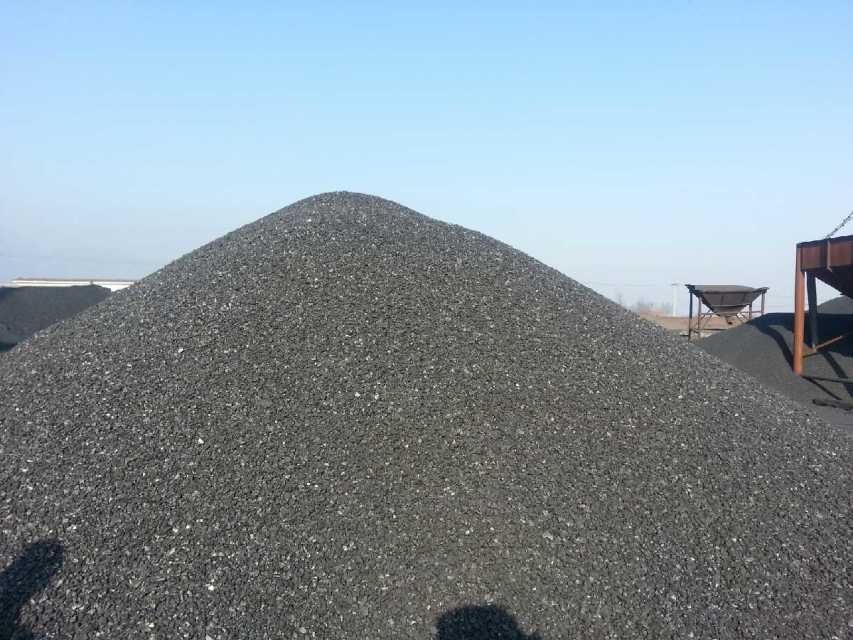
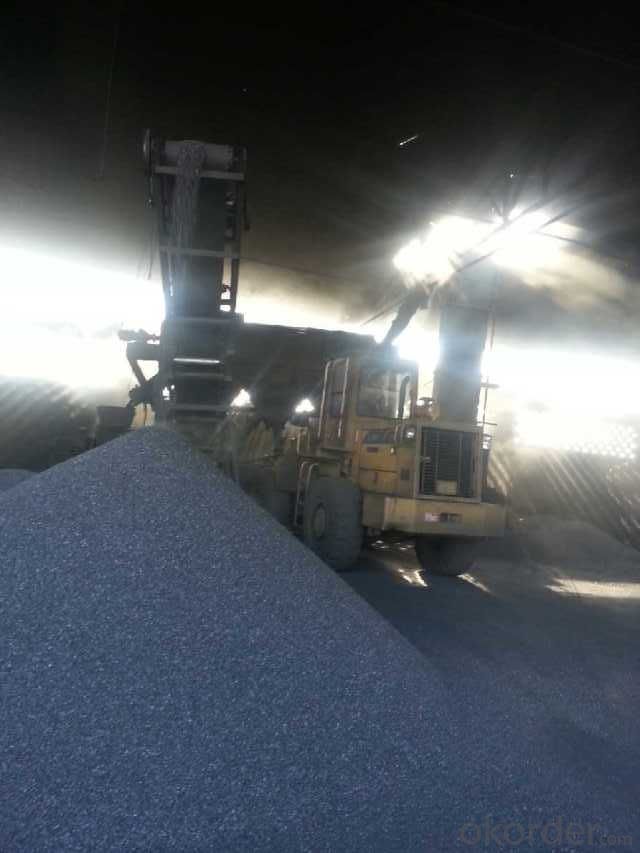
We are also strong at below materials, please contact us if you are interested in any of them:
Calcined Petroleum Coke
Carbon Electrode Paste
Carbon Electrode
- Q: What are the properties of carbon fibers?
- Carbon fibers are a unique and versatile material with several notable properties. One of their most significant properties is their exceptional strength-to-weight ratio. Carbon fibers are incredibly strong, often surpassing the strength of steel, while also being significantly lighter. This property makes carbon fibers ideal for applications where high strength and low weight are crucial, such as aerospace and automotive industries. Another important property of carbon fibers is their stiffness. They exhibit high stiffness, which means they have minimal deformation under applied loads. This property is beneficial in applications where rigidity and stability are required, such as in the construction of sporting goods like tennis rackets or golf clubs. Carbon fibers also possess excellent chemical resistance. They are highly resistant to chemical corrosion, making them suitable for use in harsh environments where exposure to chemicals or corrosive substances is a concern. This property makes carbon fibers a preferred choice for applications in the chemical industry or offshore structures. Furthermore, carbon fibers have a low thermal expansion coefficient, meaning they do not expand significantly when exposed to heat. This property makes them useful in applications where thermal stability is crucial, such as in the manufacturing of high-temperature components like turbine blades or heat shields. Additionally, carbon fibers exhibit excellent fatigue resistance, allowing them to withstand repeated loading and unloading cycles without significant damage. This property is particularly advantageous in applications subjected to cyclic or dynamic stresses, such as in the construction of sports equipment or aerospace structures. Lastly, carbon fibers have excellent electrical conductivity. They can conduct electricity efficiently, making them suitable for applications where electrical conductivity is required, such as in the aerospace industry for lightning strike protection or in the manufacture of electronic devices. Overall, the properties of carbon fibers, including their high strength-to-weight ratio, stiffness, chemical resistance, low thermal expansion, fatigue resistance, and electrical conductivity, make them a highly desirable and sought-after material in various industries.
- Q: How does carbon contribute to global warming?
- Carbon contributes to global warming through the greenhouse effect. When carbon dioxide (CO2) and other greenhouse gases are released into the atmosphere through human activities like burning fossil fuels, deforestation, and industrial processes, they trap heat from the sun and prevent it from escaping back into space. This leads to an increase in the Earth's temperature, resulting in global warming and climate change.
- Q: Excuse me, carbon steel, carbon steel pipe, seamless steel pipe, spiral steel pipe, what is the difference?
- These nouns do not seem to be a method of division.Carbon steel pipe: refers to the pipe material is carbon steel, from the material on the pipeline division. A pipe that is different from stainless steel pipes and other materials;Carbon steel plate: refers to the pipe rolls are made of carbon steel, divided from making method. It is different from seamless steel tube and spiral steel tube.
- Q: What are the effects of carbon emissions on the stability of wetlands?
- Carbon emissions have significant effects on the stability of wetlands. Increased carbon emissions contribute to global warming, causing rising temperatures and altered precipitation patterns, which in turn lead to changes in the hydrological cycle. These changes impact the water balance and distribution within wetland ecosystems, potentially resulting in increased drying and loss of water-dependent vegetation. Additionally, carbon emissions can lead to increased acidity in wetland waters, which can harm aquatic life and disrupt the delicate balance of the ecosystem. Overall, carbon emissions pose a significant threat to wetlands, jeopardizing their stability and the many benefits they provide, such as water filtration, carbon sequestration, and habitat for diverse plant and animal species.
- Q: How does carbon affect the quality of indoor air?
- Carbon can have a significant impact on the quality of indoor air as it is emitted from various sources such as burning fossil fuels, cooking, and smoking. High levels of carbon can lead to poor air quality, causing symptoms like headaches, dizziness, and fatigue. Additionally, carbon monoxide, a toxic gas produced by incomplete combustion, can be lethal in enclosed spaces. Therefore, it is crucial to properly ventilate and monitor indoor areas to mitigate the negative effects of carbon on indoor air quality.
- Q: How is carbon used in the production of graphite?
- The production of graphite relies heavily on carbon, which undergoes extreme heat and pressure to form its distinctive crystalline structure. The process commences with a high-quality carbon source, like petroleum coke or coal tar pitch, which is heated to eliminate impurities and transform it into pure coke. This coke is then ground into a fine powder and combined with a binder, typically pitch, to create a paste. The paste is molded into the desired shape, such as rods or blocks, and exposed to high temperatures in a furnace. The heat prompts the decomposition of the binder and the rearrangement of carbon atoms into hexagonal layers, characteristic of graphite. The furnace's high pressure aids in aligning the carbon layers, resulting in the formation of graphite crystals. Following the furnace process, the graphite undergoes further purification through treatments like chemical washing and acid leaching to eliminate any remaining impurities. Ultimately, the purified graphite is shaped into the final product, such as pencils, electrodes, or lubricants, using techniques like extrusion or machining. To summarize, the production of graphite involves subjecting a carbon source to high temperatures and pressures, leading to the creation of graphite crystals with its unique layered structure. This process enables the manufacturing of diverse graphite products, widely utilized in industries such as manufacturing, electronics, and energy.
- Q: How can carbon capture and storage be implemented?
- Carbon capture and storage (CCS) can be implemented through a three-step process. First, carbon dioxide (CO2) is captured from industrial emissions sources such as power plants or factories. This can be done using technologies like post-combustion capture, pre-combustion capture, or oxy-fuel combustion. Second, the captured CO2 is transported via pipelines or ships to suitable storage sites. These storage sites can include deep underground geological formations, such as depleted oil and gas fields or saline aquifers. Finally, the CO2 is securely stored in these underground reservoirs, preventing it from being released into the atmosphere. Implementing CCS requires the development of appropriate infrastructure, supportive policies, and investment in research and development to make the process economically viable and environmentally sustainable.
- Q: What is carbon black rubber?
- Carbon black rubber, which incorporates carbon black as an additive, is a variant of rubber. Carbon black, a finely divided form of carbon generated from the incomplete combustion of hydrocarbon fuels, is utilized in rubber compounds to enhance their mechanical characteristics, including tensile strength, abrasion resistance, and resilience. Within the rubber matrix, the carbon black particles are evenly dispersed, serving to reinforce the material and amplify its durability and performance. Carbon black rubber finds extensive application in the manufacturing of tires, conveyor belts, gaskets, seals, as well as a range of automotive and industrial rubber goods.
- Q: Made of high strength structural partsThe market quality of the carbon fiber plate is too much, the price is low, do not know how to choose. A knowledgeable friend can introduce larger enterprises? The quality of the carbon fiber board produced must be better and the performance should be stable!
- You are not for the prestressing bar, if you find the building reinforcement for Tianjin Beijing card, if you do the structure reinforcement for Jiangsu and Wuxi via the new material industry, these are relatively well-known.
- Q: How can Dungeon Fighter Online's superior furnace rock carbon be obtained?
- Bought in cash. You can go to the mall to have a look.
Send your message to us
Injection carbon FC80-90 with stable quality
- Loading Port:
- Tianjin
- Payment Terms:
- TT OR LC
- Min Order Qty:
- 20 m.t.
- Supply Capability:
- 3000 m.t./month
OKorder Service Pledge
OKorder Financial Service
Similar products
Hot products
Hot Searches

